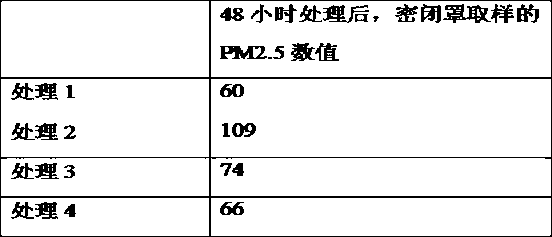Cutting propagation method of strengthening antipollution factor zelkova schneideriana
A cutting propagation, anti-pollution technology, applied in the field of plant propagation
- Summary
- Abstract
- Description
- Claims
- Application Information
AI Technical Summary
Problems solved by technology
Method used
Image
Examples
Embodiment 1
[0029] The young twigs of the zelkova trees are collected in the urban area and other nearby cities affected by haze weather. Observe the trees in good condition and collect the branches that do not affect the growth of the zelkova trees.
[0030] 1) Use 2-3 year old zelkova tree branches as spikes, disinfect the cut with 75% alcohol for 18 seconds, rinse with deionized water, soak with 0.08% nano silver titanium solution for 10 minutes, and rinse with deionized water 3 times, use filter paper to absorb the water for later use;
[0031] 2) Cut the branches treated in step 1) into 1.5cm stems containing at least one axillary bud. The laboratory controlled cultivation environment is normal temperature and pressure, and the air humidity is 90%; the stems are implanted in the culture medium and cultivated 28 In the last 3 days, the clump buds are obtained, and the clump buds are raised for the last 3 days, and the humidity is controlled at 75%. Among them, the formulation of t...
Embodiment 2
[0046] The third-generation seedlings obtained in Example 1 were transplanted into a nutrient bowl with clean water to wash the medium. The nutrient soil in the nutrient bowl was plant ash and humus soil and mixed 1:5, adding a little humus beech leaves as the substrate , Add water to moisturize, control the light intensity to 1500Lx, the daylight is more than 8 hours, control the humidity 75%, after 5 days of treatment, put the nutrient bowl in the greenhouse for normal culture, and check the survival rate of this batch of seedlings after 1 month. Up to 95.6%.
Embodiment 3
[0048] The third-generation seedlings obtained in Example 1 were planted in the open air at the Lin'an Hengfan Hongye Horticulture Planting Base. The sunny plots with more than 8 hours of sunlight were planted by digging holes in the soil, and the ratio of plant ash to humus soil in the pits It is 1:5 mixing, adding a little humus beech leaves as the substrate, and using automatic sprinkler irrigation facilities for irrigation. After one month, the survival rate of the seedlings is 88%.
PUM
 Login to View More
Login to View More Abstract
Description
Claims
Application Information
 Login to View More
Login to View More - R&D Engineer
- R&D Manager
- IP Professional
- Industry Leading Data Capabilities
- Powerful AI technology
- Patent DNA Extraction
Browse by: Latest US Patents, China's latest patents, Technical Efficacy Thesaurus, Application Domain, Technology Topic, Popular Technical Reports.
© 2024 PatSnap. All rights reserved.Legal|Privacy policy|Modern Slavery Act Transparency Statement|Sitemap|About US| Contact US: help@patsnap.com








